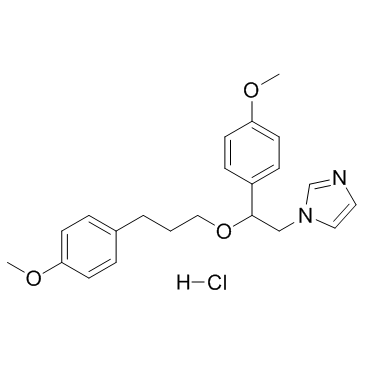Effects of inhibitors of nonselective cation channels on the acetylcholine-induced depolarization of circular smooth muscle from the guinea-pig stomach antrum.
Aya Hotta, Young Chul Kim, Eri Nakamura, Yoshihiko Kito, Yoshimichi Yamamoto, Hikaru Suzuki
Index: J. Smooth Muscle Res. 41 , 313-327, (2005)
Full Text: HTML
Abstract
In circular smooth muscle bundles isolated from the guinea-pig stomach antrum, the effects of quinidine, Ni2+, flufenamic acid, niflumic acid, La3+, SKF-96365 and 4'-diisothiocyanatostilbene-2,2'-disulphonic acid (DIDS) on acetylcholine (ACh)-induced depolarization were investigated. Recording membrane potentials from smooth muscle cells with intracellular microelectrodes revealed that ACh (1 microM) depolarized the membrane by 5-8 mV and increased the amplitude and frequency of slow potentials. These effects were inhibited by atropine. Quinidine (10 microM) increased the amplitude of ACh-induced depolarization, with no alteration to the properties of slow potentials. Ni2+ (50 microM) transiently (5-10 min) depolarized the membrane by about 5 mV, with an associated increase in frequency and amplitude of slow potentials. In the stabilized condition with Ni2+, the amplitude of ACh-induced depolarization remained unchanged. Flufenamic acid (10 microM) inhibited the generation of slow potentials, with no change in either the amplitude of ACh-induced depolarization or of the amplitude and frequency of slow potentials generated during ACh stimulation. A high concentration of flufenamic acid (100 microM) depolarized the membrane and increased the amplitude of ACh-induced depolarization. Niflumic acid (10 microM) hyperpolarized the membrane and increased the amplitude and frequency of slow potentials and also the amplitude of ACh-induced depolarization. DIDS (100 microM) hyperpolarized the membrane and inhibited the amplitude and frequency of slow potentials, with no alteration to the amplitude of ACh-induced depolarization. SKF-96365 (3-50 microM) depolarized the membrane in a concentration-dependent manner, but did not change the level of ACh-induced depolarization. La3+ (50 microM) did not alter the properties of the slow potentials or the ACh-induced responses. These results provide evidence that ACh-induced depolarization is not inhibited by chemicals known to inhibit non-selective cation channels. We suggest that muscarinic receptor-mediated signal transduction may be different in smooth muscle and interstitial cells.
Related Compounds
| Structure | Name/CAS No. | Molecular Formula | Articles |
|---|---|---|---|
 |
SKF-96365
CAS:130495-35-1 |
C22H27ClN2O3 |
|
Mechanosensitive Ca²⁺-permeable channels in human leukemic c...
2015-01-01 [Biochim. Biophys. Acta 1848(1 Pt A) , 51-9, (2015)] |
|
STIM1 phosphorylation triggered by epidermal growth factor m...
2015-01-01 [Biochim. Biophys. Acta 1853(1) , 233-43, (2015)] |
|
ATP releases ATP or other nucleotides from human peripheral ...
2016-01-15 [Life Sci. 145 , 85-92, (2016)] |
|
TRPM8 Channel Activation Induced by Monoterpenoid Rotundifol...
2015-01-01 [PLoS ONE 10 , e0143171, (2015)] |
|
STIM is a Ca2+ sensor essential for Ca2+-store-depletion-tri...
2005-07-12 [Curr. Biol. 15(13) , 1235-41, (2005)] |